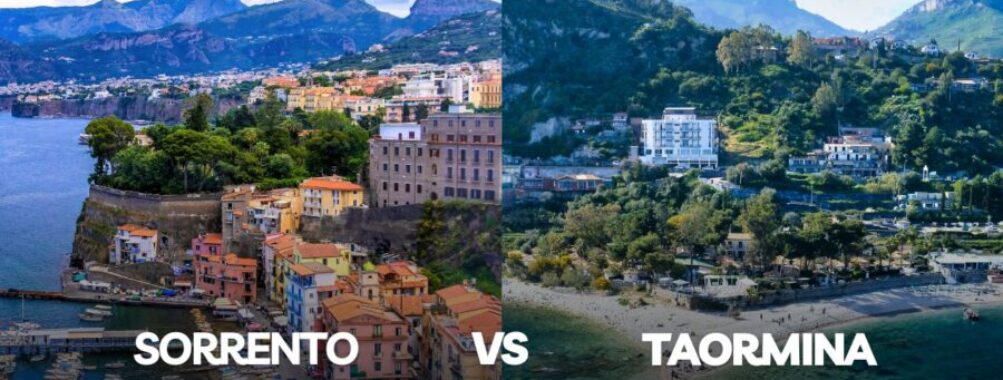
Sorrento vs Taormina: Which Coastal Italian Paradise Offers the Ultimate Mediterranean Escape in 2025?
Planning a Mediterranean getaway and can’t decide between Sorrento or Taormina? These coastal gems offer stunning views and unique experiences, but cater to different travel styles.
Sorrento is the larger, busier town with excellent food and shopping. It serves as a perfect base for exploring Pompeii and the Amalfi Coast.
It’s known for its vibrant atmosphere and variety of activities, including scuba diving, hiking, and big-city amenities. While wonderful, it tends to be crowded during peak season.
Taormina, nestled in Sicily, offers a more upscale, boutique experience with impressive museums and ancient ruins. It’s generally more relaxed than Sorrento and tends to be more budget-friendly for accommodations and tours. The town has a distinctly different cultural feel, reflecting Sicily’s unique blend of influences that sets it apart from mainland Italy.
Table of Contents
- Geographic Overview
- Location and Accessibility
- Climate Comparison
- Cultural Significance
- Historic Landmarks
- Local Traditions
- Tourist Attractions
- Sorrento Highlights
- Taormina’s Must-Sees
- Accommodation Options
- Luxury Stays
- Budget-Friendly Choices
- Culinary Journey
- Local Delicacies
- Dining Experiences
- Outdoor Adventures
- Hiking and Trekking
- Water Activities
- Shopping and Souvenirs
- Local Crafts and Boutiques
- Marketplaces
- Events and Nightlife
- Festivals and Celebrations
- Bars and Clubs
- Practical Information
- Travel Tips
- Safety and Health
- Frequently Asked Questions
- What unique experiences distinguish Taormina from Sorrento?
- How do the cultural attractions of Sorrento compare with those in Taormina?
- Can you highlight the differences between Sorrento and Taormina regarding culinary scenes?
- What are the accommodation choices in Taormina versus Sorrento for various travel budgets?
- Could you discuss the accessibility of beaches when deciding between a stay in Taormina or Sorrento?
- What are the transportation options for exploring the surrounding areas of Sorrento and Taormina?
- Book Your Dream Experience
- More Travel Guides
Geographic Overview

Sorrento and Taormina are situated in picturesque coastal regions of Italy, but they differ significantly in their geography, climate, and accessibility. Both locations offer stunning Mediterranean views, but from completely different Italian landscapes.
Location and Accessibility

Sorrento is on the southwestern coast of Italy, on the Sorrentine Peninsula, overlooking the Bay of Naples. It is an ideal gateway to the famous Amalfi Coast and the island of Capri. The town is relatively easy to reach, just 50 km from Naples, and has an international airport and good train connections.
From Sorrento, you can take ferries to Capri or buses along the winding coastal roads to Positano and Amalfi. This central location makes it a perfect base for exploring the Campania region.
Conversely, Taormina is perched on Sicily’s eastern coast, clinging to a hillside above the Ionian Sea. It offers spectacular views of Mount Etna, Europe’s most active volcano. Taormina is about 60 km from Catania Airport, the main gateway to eastern Sicily.
Unlike Sorrento, Taormina isn’t as well-connected to other major destinations. Sicily’s more isolated position requires additional planning for travelers visiting mainland attractions like Calabria.
Climate Comparison

Both destinations enjoy a Mediterranean climate, but with notable differences. Sorrento experiences mild, rainy winters and hot, dry summers. Summer temperatures typically range from 25-30°C (77-86°F), while winter averages around 8-13°C (46-55°F).
The Sorrentine Peninsula is somewhat protected by mountains, creating a microclimate slightly milder than the surrounding region. This pleasant weather contributes to Sorrento’s popularity as a year-round destination.
Taormina generally has warmer temperatures year-round due to Sicily’s southerly position. Summers can be quite hot, often exceeding 30°C (86°F), while winters remain mild at around 10-15°C (50-59°F).
Mount Etna influences Taormina’s weather patterns, occasionally bringing more variable conditions. The swimming season in Taormina typically lasts longer than in Sorrento, often extending from May through October.
Cultural Significance

Both Sorrento and Taormina boast rich cultural heritage that spans thousands of years. Various civilizations have shaped these coastal gems, creating unique identities through their historic sites and living traditions.
Historic Landmarks

Taormina’s crown jewel is the ancient Greek Theater (Teatro Greco), dating back to the 3rd century BCE. Perched dramatically on a hillside, it offers stunning views of Mount Etna and the Ionian Sea.
The theater still hosts performances and festivals, connecting modern visitors to the ancient past. Messina is nearby, contributing to the region’s historic significance with its 12th-century cathedral and astronomical clock.
Sorrento doesn’t have structures quite as ancient, but its historic center reveals layers of Greek, Roman, and medieval influence. The 14th-century Cloister of San Francesco is one of its most cherished landmarks. Just a short journey away, visitors can explore the ruins of Pompeii and Herculaneum, frozen in time by Mount Vesuvius‘s eruption.
Local Traditions
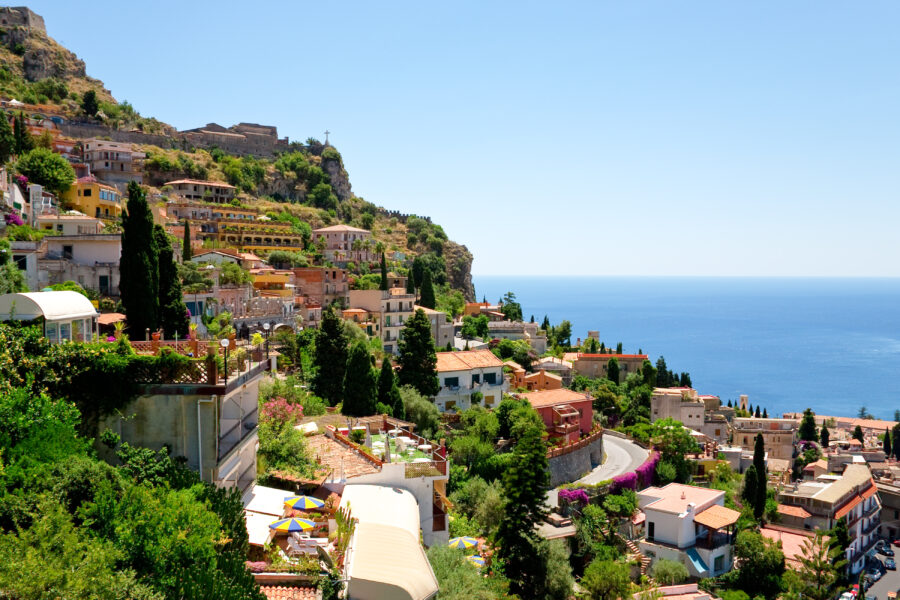
Taormina embraces its Sicilian identity through vibrant cultural expressions. The town celebrates numerous festivals, including the Taormina Film Festival and Taormina Arte. Local artisans continue centuries-old traditions in ceramics, particularly the distinctive painted Sicilian pottery with Moorish influences.
Sorrento prides itself on its artisanal heritage. The intricate woodworking technique, intarsio sorrentino (Sorrento inlay), produces distinctive decorative items. Visitors can watch craftspeople create these wooden masterpieces in workshops throughout the city.
Both destinations maintain strong culinary traditions. Taormina offers authentic Sicilian dishes featuring fresh seafood, while Sorrento is famous for its lemons and limoncello production. These food traditions connect visitors directly to the cultural heart of each location.
See Related: Luxury Resorts in Italy: Unrivaled Elegance for Your Dream Vacation
Tourist Attractions
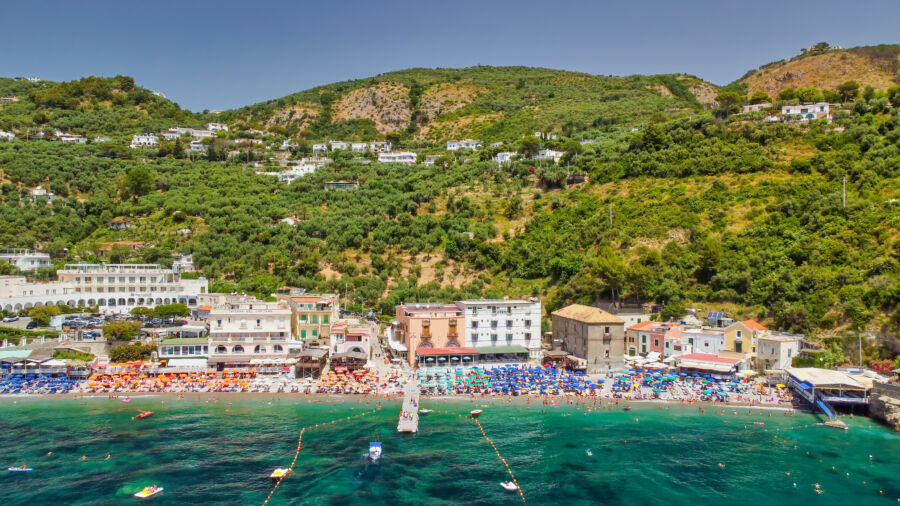
Both Sorrento and Taormina offer stunning attractions that draw visitors worldwide. Each destination showcases unique historical sites, natural wonders, and cultural experiences that create unforgettable vacation memories.
Sorrento Highlights
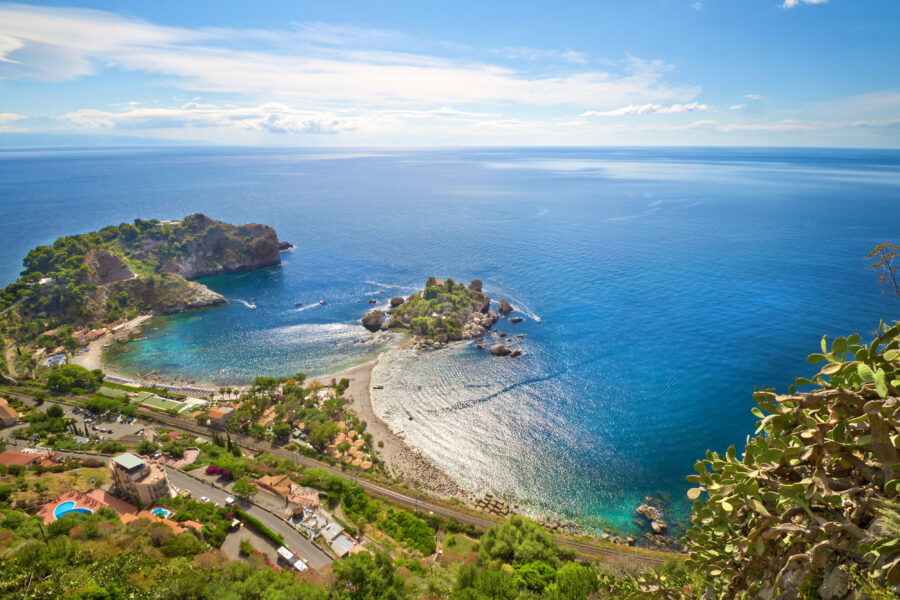
Sorrento serves as an ideal base for exploring the breathtaking Amalfi Coast. The charming town center features Piazza Tasso, a lively square surrounded by cafes and shops selling local limoncello and marquetry woodwork.
The old fishing harbor, Marina Grande, offers authentic seafood restaurants with incredible views. Don’t miss the 14th-century Chiostro di San Francesco’s peaceful cloister and garden.
Day trips from Sorrento are particularly special. You can easily visit stunning coastal towns like Positano, with its pastel-colored buildings cascading down the cliffside. The ancient ruins of Pompeii are just 30 minutes away by train.
Nature lovers appreciate the scenic Path of the Gods hiking trail, offering panoramic views of the Mediterranean. Boat tours around the coastline provide a different perspective of the dramatic cliffs and hidden coves.
Taormina’s Must-Sees
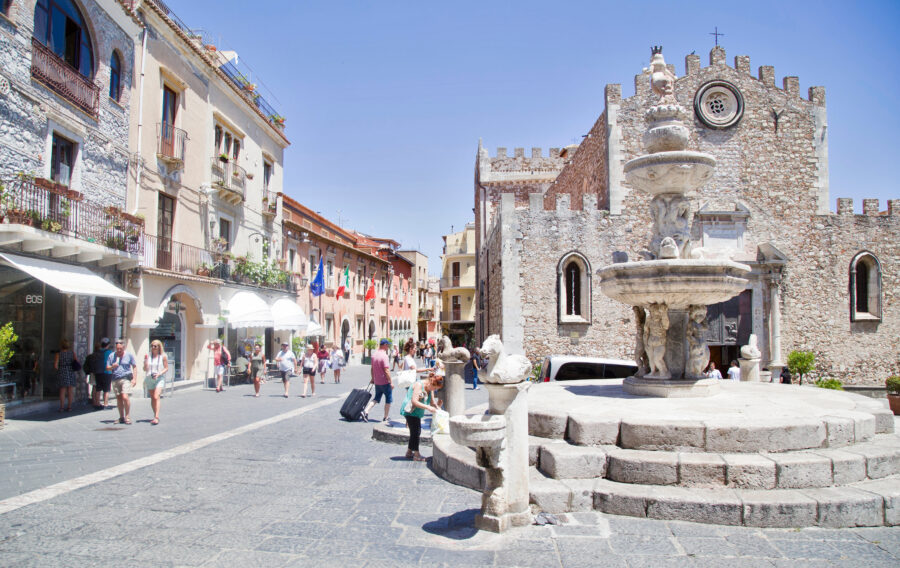
Taormina’s crown jewel is the Ancient Greek Theater (Teatro Antico), dating back to the 3rd century BC. This remarkably preserved amphitheater offers spectacular views of Mount Etna and the Ionian Sea.
The main street, Corso Umberto I, winds through town with medieval buildings, designer boutiques, and artisan shops. Piazza IX Aprile provides a perfect panoramic terrace for admiring the coastline.
Just below Taormina lies Isola Bella, a tiny nature reserve island connected to the mainland by a narrow sandbar. The crystal-clear waters around it are perfect for swimming and snorkeling.
Day trips from Taormina open up Sicily’s treasures. Visit the beautiful fishing village of Cefalù with its Norman cathedral, or explore the Madonie mountains for hiking. The volcanic Aeolian Islands make an excellent boat excursion with their black sand beaches and active craters.
Accommodation Options

Sorrento and Taormina offer diverse accommodations, from luxurious resorts to budget-friendly options. The cost and style of accommodations differ significantly between these two popular destinations.
Luxury Stays

In Taormina, luxury accommodations often feature breathtaking views of Mount Etna or the Mediterranean Sea. Boutique hotels in converted villas provide an authentic Sicilian experience with rates typically ranging from €200 to €500 per night. Many upscale properties are nestled along the cliffside, offering private terraces and infinity pools that make the most of the stunning scenery.
Sorrento’s luxury scene tends to be more expensive, with daily costs averaging around €168 compared to Taormina’s €132. The town features elegant hotels housed in historic buildings with lemon groves and gardens. Five-star properties often provide shuttle services to nearby attractions and private beach access.
Both destinations shine in their high-end offerings, but Sorrento generally has a heftier price tag for comparable luxury.
Budget-Friendly Choices
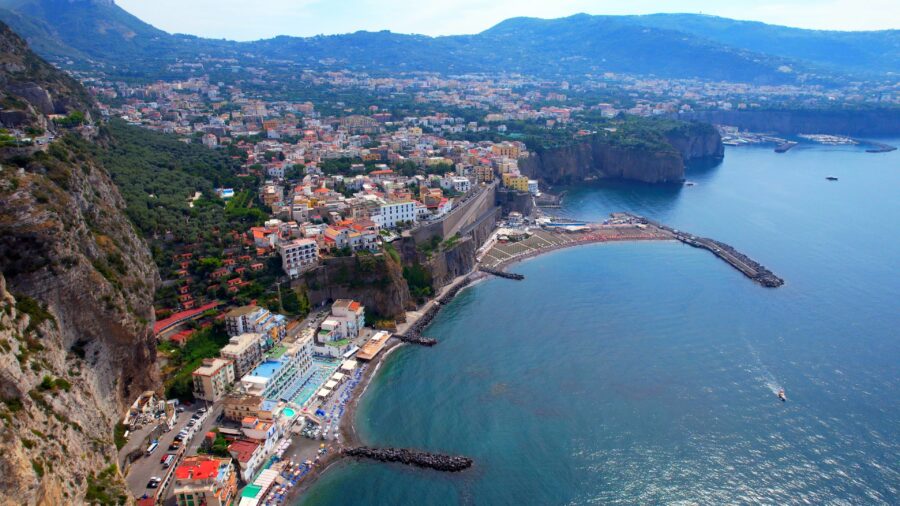
Travelers looking at their wallets will find Taormina’s accommodation pricing generally more favorable than Sorrento’s. Outside the main tourist center, family-run B&Bs and guesthouses offer rooms starting around €60-90 per night with breakfast included.
Sorrento’s budget options are limited within the town itself. Budget-conscious travelers often stay near Sant’Agnello or Piano di Sorrento, where prices drop significantly. Hostels and simple guesthouses start around €50-70 in the off-season but can double during summer months.
Sicily overall tends to be more affordable than the Amalfi Coast region. Many travelers use hotel search platforms to compare prices and find special deals, especially during shoulder seasons when rates drop in both locations.
Culinary Journey
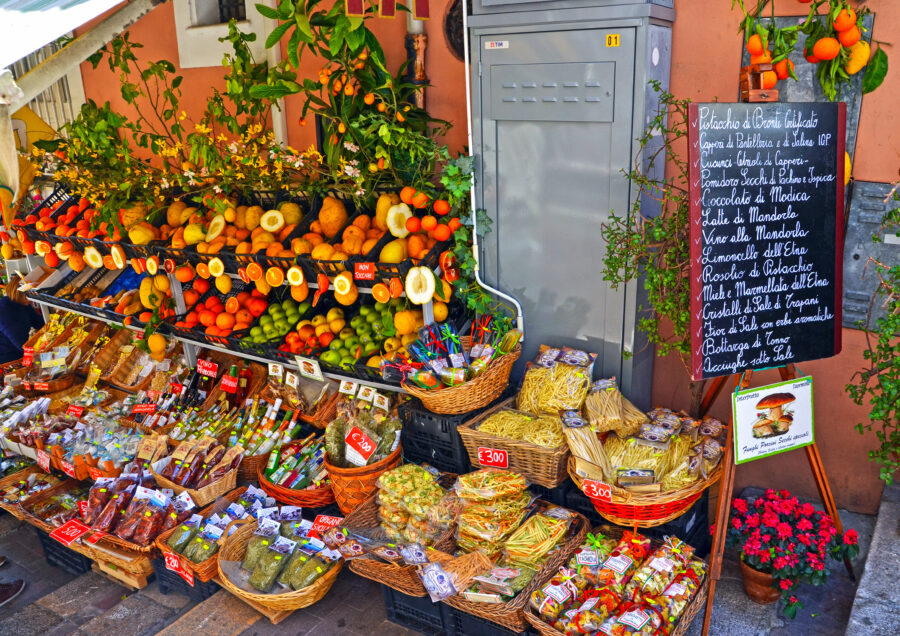
Sorrento and Taormina offer incredible food experiences showcasing the best Italian cuisine with regional twists. The food scene in each destination reflects its unique cultural heritage, local ingredients, and traditional cooking methods.
Local Delicacies

In Sorrento, food lovers can indulge in the famous limoncello, a sweet lemon liqueur made from the region’s prized lemons. These citrus fruits grow abundantly in the area and appear in many dishes. Gnocchi alla sorrentina, featuring potato dumplings baked with tomato sauce and mozzarella, is a must-try local specialty.
Seafood also dominates Sorrento’s cuisine. Fresh catches from the Tyrrhenian Sea appear in dishes like spaghetti alle vongole (spaghetti with clams). The region’s creamy gelato provides the perfect sweet ending to any meal.
Taormina’s Sicilian cuisine offers different flavors. Arancini (fried rice balls) and pasta alla Norma (pasta with eggplant, tomatoes, and ricotta) showcase Sicily’s Arabic influences. The town’s coastal location ensures fresh seafood options, while cannoli and cassata represent Sicily’s famous dessert traditions.
Dining Experiences
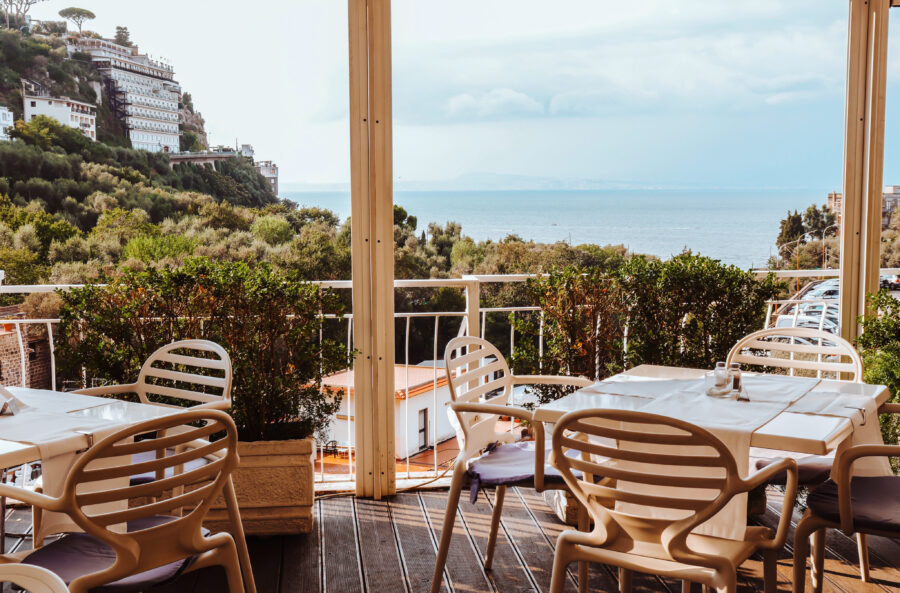
Sorrento offers a wider range of dining options than Taormina. Visitors can choose from casual trattorias to upscale restaurants with stunning Bay of Naples views. Many eateries in Sorrento serve authentic dishes at reasonable prices, especially compared to nearby Amalfi Coast towns.
Locals recommend exploring side streets away from Piazza Tasso for more authentic and affordable meals. Cooking classes focusing on Neapolitan pizza and pasta making have become popular tourist activities.
According to search results, Taormina’s dining scene tends to be more expensive and touristy. While there are exceptional restaurants, visitors often report mediocre food quality at inflated prices in the main tourist areas. For authentic Sicilian cuisine, travelers should venture to small family-run establishments slightly off the main corso or consider day trips to Palermo for an authentic taste of Sicilian food culture.
Outdoor Adventures

Sorrento and Taormina offer amazing outdoor activities for travelers who love nature and adventure. These coastal destinations provide unique landscapes for hiking and water-based fun that showcase the best of Italy’s natural beauty.
Hiking and Trekking

Taormina’s crown jewel for hikers is Mount Etna, Europe’s largest active volcano. Guided tours up the slopes allow you to witness smoking craters and stunning panoramic views. The terrain changes dramatically as you ascend, from lush vegetation to lunar-like landscapes near the summit.
For a less intense experience, the paths around Taormina offer coastal walks with breathtaking views of the Mediterranean—the walk to Castelmola, a charming village above Taormina, rewards hikers with spectacular vistas.
Sorrento boasts equally impressive trails along the Amalfi Coast. The famous “Path of the Gods” (Sentiero degli Dei) stretches between Positano and Nocelle, offering jaw-dropping coastline views.
The hills behind Sorrento feature lemon and olive groves, and well-marked trails showcase rural Italian life. Many paths lead to hidden coves and beaches only accessible on foot.
Water Activities

Sorrento excels with its water-based adventures. The clear blue waters are perfect for snorkeling and scuba diving. You can explore underwater caves and marine life. Boat tours to Capri Island are a must. With its magical blue light, you can swim in the famous Blue Grotto sea cave.
Kayaking along the Amalfi Coast lets you discover hidden beaches and coves at your own pace. Many operators offer guided excursions for all skill levels.
Taormina’s beaches provide excellent swimming, but the real adventure comes from boat trips to the nearby Aeolian Islands. These volcanic islands offer unique swimming spots with thermal waters, mud baths, and underwater fumaroles.
Snorkeling is particularly good at Isola Bella, a tiny island nature reserve just below Taormina. The crystal waters reveal colorful fish and underwater rock formations, making for amazing photos.
Shopping and Souvenirs
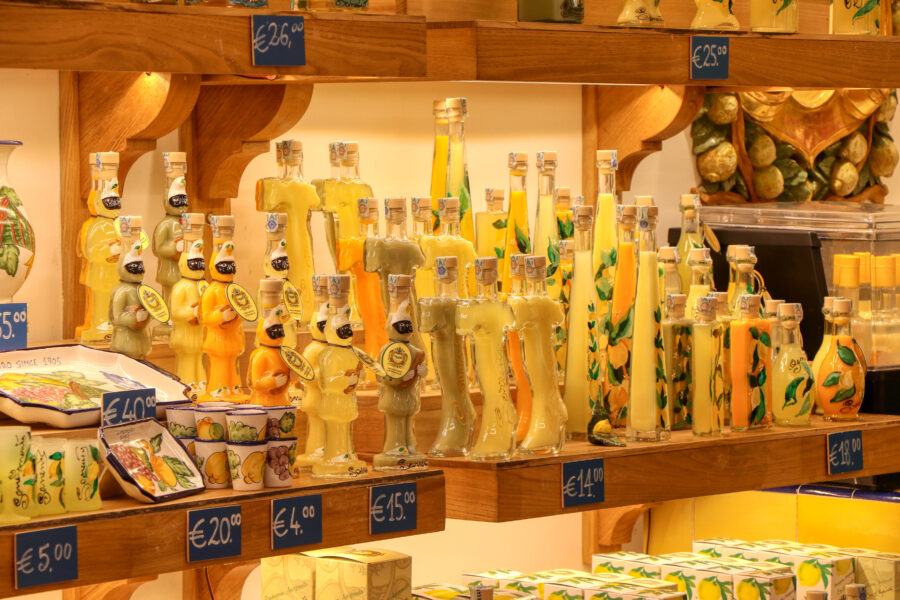
Sorrento and Taormina offer unique shopping experiences with local crafts and bustling marketplaces. These coastal towns are known for their specialty items reflecting local culture and traditions.
Local Crafts and Boutiques

Sorrento is famous for its beautiful inlaid woodwork, a centuries-old tradition. You’ll find stunning music boxes, furniture, and decorative items in the many workshops along Corso Italia and the side streets of the historic center.
Limoncello is another must-buy specialty in Sorrento. The sweet lemon liqueur comes in colorful bottles and is a perfect gift. Many shops also sell lemon-themed products like soaps, candies, and ceramics.
Taormina’s boutiques focus on Sicilian craftsmanship. Corso Umberto, the main shopping street, features shops selling hand-painted ceramics with bright Mediterranean colors and patterns. Look for the iconic Moorish head vases, a symbol of Sicily.
In Taormina, you’ll also find beautiful lace products and handmade sandals. Many boutiques offer high-end fashion and jewelry with a distinctly Italian flair.
Marketplaces

Sorrento’s weekly market takes place every Tuesday morning near the train station. It offers everything from fresh produce to clothing and housewares. For a more authentic experience, visitors can venture to nearby Naples to explore the bustling Mercato di Porta Nolana or Mercato di Pignasecca.
The local food markets in Sorrento showcase regional specialties like olive oil, cheeses, and limoncello. These markets give shoppers a taste of local life away from tourist areas.
Taormina’s marketplace culture is equally vibrant. The town hosts seasonal markets where vendors sell fresh produce, Sicilian sweets, and artisanal goods. For a larger market experience, travelers can take a short trip to Messina, which offers several historic markets.
Street vendors in Taormina frequently set up along popular routes, selling everything from handcrafted jewelry to vintage postcards. These impromptu markets add to the town’s charming atmosphere.
See Related: 10 Day Italy Trip Cost: Budget Your Dream Vacation
Events and Nightlife
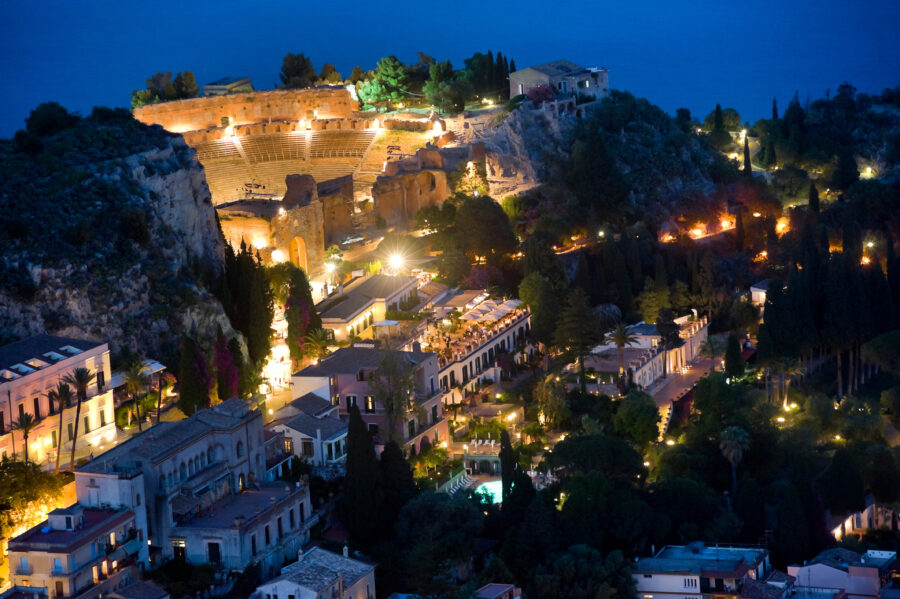
Both Sorrento and Taormina offer vibrant evening scenes with their unique flavors. These coastal gems come alive after dark with local traditions and modern entertainment options that appeal to various tastes.
Festivals and Celebrations
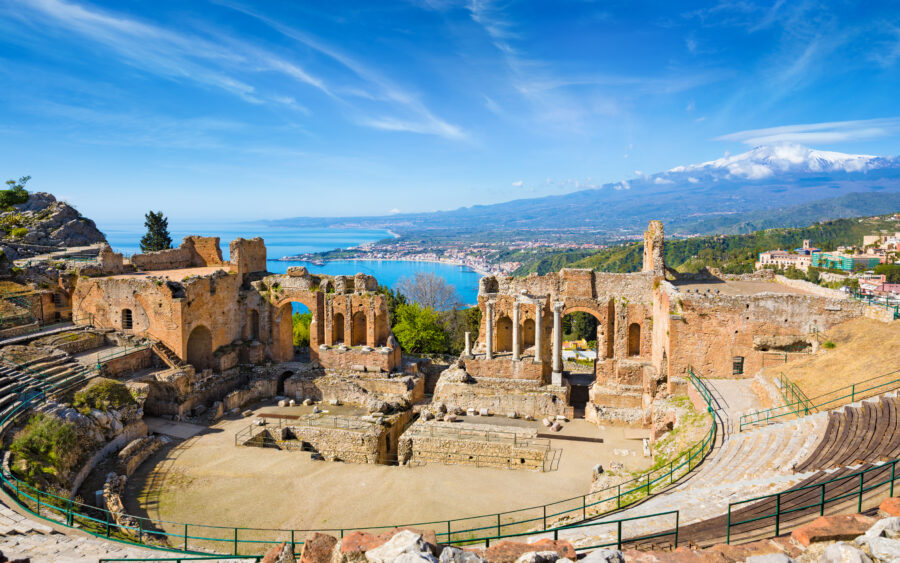
Sorrento hosts several noteworthy festivals throughout the year. The most famous is the Sorrento Summer of Music, featuring classical concerts in stunning historic venues from June through September. During Holy Week, the town transforms with solemn processions that date back centuries.
Taormina boasts the prestigious Taormina Film Festival, which attracts international celebrities and film enthusiasts to its ancient Greek theater each June. Mount Etna’s backdrop against the starlit sky creates an unforgettable setting for film screenings.
The Taormina Arte festival brings theater, dance, and music performances throughout the summer. Locals in both towns celebrate their patron saints with colorful processions, fireworks, and street food—San Antonino in Sorrento (February) and San Pancrazio in Taormina (July).
Bars and Clubs
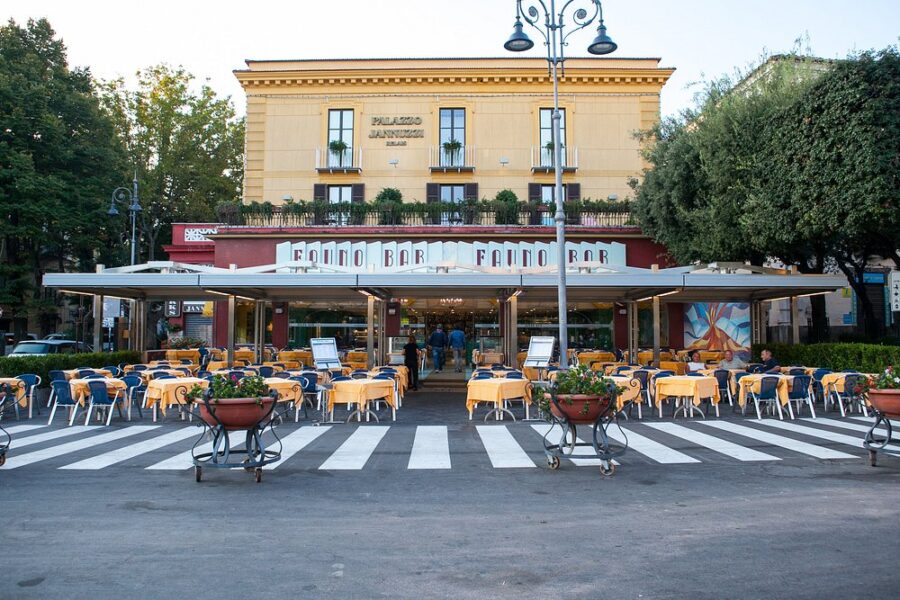
Sorrento’s nightlife centers around Piazza Tasso and Corso Italia. You’ll find everything from casual wine bars to more energetic dance venues. Locals and tourists mix at popular spots like Fauno Bar and Fauno Notte Club, where you can enjoy cocktails and dancing until the early hours.
Taormina offers a more relaxed nightlife scene compared to Sorrento. The main strip, Corso Umberto, houses elegant wine bars and cocktail lounges with spectacular views. Many venues feature terraces overlooking the twinkling Mediterranean below.
For those seeking more excitement, Messina (near Taormina) offers larger nightclubs and a more diverse party scene. Piano bars are popular in both towns, with talented musicians playing everything from Italian classics to modern hits while you sip limoncello under the stars.
Practical Information

Understanding the practical aspects can make your trip to Sorrento or Taormina more enjoyable. Both destinations have different accessibility, cost considerations, and safety factors that travelers should consider.
Travel Tips
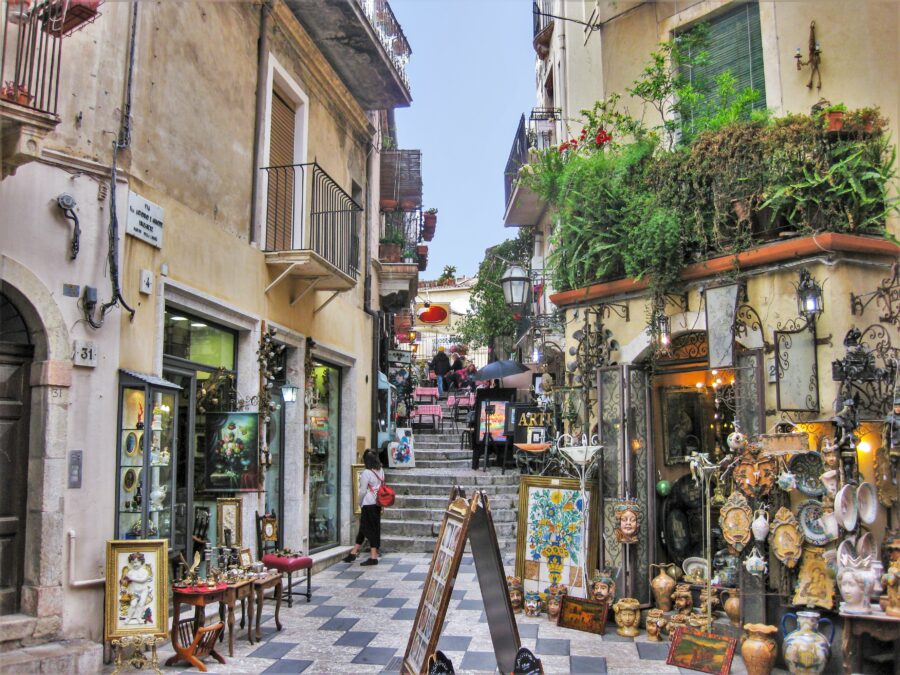
Sorrento and Taormina have different transportation options that affect how you plan your visit. Sorrento is well-connected by train from Naples, and the journey takes about an hour. It also serves as a gateway to the Amalfi Coast, with regular ferries and buses to towns like Positano and Amalfi.
Taormina in Sicily requires a bit more planning. The closest airport is in Catania, which is about an hour’s drive away. You can take a bus or train from there, but renting a car might be more convenient for exploring Sicily.
Cost differences are significant. Taormina is generally more expensive than most Sicilian towns but still cheaper than Sorrento. Accommodations in Sorrento can be pricey, especially during the high season (May-September).
The best times to visit are:
- Sorrento: April-June, September-October
- Taormina: May-June, September-October
Avoid August in both places unless you enjoy crowds and heat!
Safety and Health

Both destinations are generally safe for tourists, but taking normal precautions is advised. In Sorrento, be cautious of pickpockets in crowded areas, especially at train stations and busy markets. The same applies to Taormina, particularly in tourist-heavy spots like the Ancient Theatre.
Traffic in both towns can be challenging. Sorrento’s narrow streets get congested during peak season. Taormina restricts vehicle access to its historic center, making it more pedestrian-friendly but requiring walks uphill.
Healthcare facilities in both areas are adequate for basic needs. Sorrento has several pharmacies and a hospital, while Taormina has medical services but might require travel to larger Sicilian cities for specialized care.
Water is generally safe to drink in both locations, but bottled water is widely available and preferred by many visitors. The summer heat can be intense, so staying hydrated is important, especially when exploring outdoor sites.
See Related: Unforgettable Religious Tours in Italy: Transform Your Faith Journey in the Jubilee Year
Frequently Asked Questions
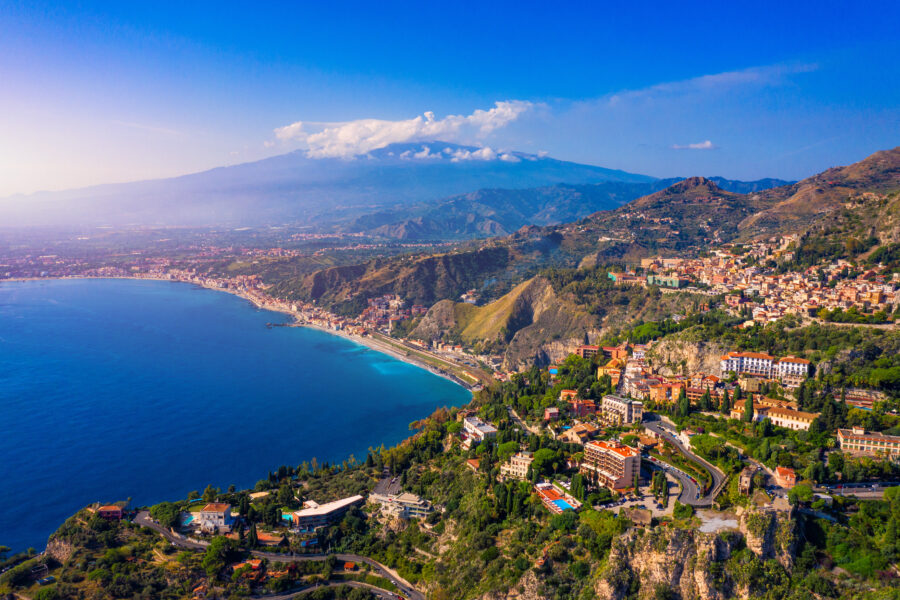
Choosing between Sorrento and Taormina involves understanding their distinct offerings in experiences, culture, food, and practical considerations. Depending on what you’re looking for in an Italian getaway, both destinations have unique appeal.
What unique experiences distinguish Taormina from Sorrento?
Taormina offers a more distinctive medieval hill town experience. It is perched dramatically above the sea with Mount Etna looming in the background. Its ancient Greek theater provides spectacular views you won’t find in Sorrento.
Sorrento has a more cosmopolitan feel as a small city rather than a hill town. It serves perfectly as a gateway to explore the Amalfi Coast, Capri, and Pompeii, making it ideal for travelers who want to see multiple famous Italian destinations.
The atmosphere differs too – Taormina tends to feel more exclusive and intimate, while Sorrento has a busier vibe with more day-trippers passing through.
How do the cultural attractions of Sorrento compare with those in Taormina?
Taormina boasts richer museum offerings and historical sites, with its crowning jewel being the ancient Greek-Roman Theater dating back to the 3rd century BC. The town’s narrow medieval streets and piazzas themselves feel like living museums.
Sorrento’s cultural attractions focus on local crafts, including world-famous inlaid woodwork workshops and limoncello production. The historic center features the 14th-century Cloister of San Francesco and charming Baroque churches. While Sorrento connects visitors to nearby Pompeii and Herculaneum, Taormina has more notable historical sites, including Arab-Norman architecture and ancient ruins.
Can you highlight the differences between Sorrento and Taormina regarding culinary scenes?
Sorrento shines with its Campanian cuisine, which features fresh seafood, buffalo mozzarella, and citrus-infused dishes. The area’s lemons are used in everything from pasta to the famous limoncello liqueur.
Taormina’s cuisine reflects Sicily’s diverse culinary history with Arab, Spanish, and Greek influences. Expect more complex flavor profiles with pistachios, eggplant, and sweet-savory combinations in dishes like pasta alla Norma.
The street food scenes differ too – Sorrento offers quick bites like pizza a portafoglio (folded pizza), while Taormina tempts with arancini rice balls and sweet cannoli filled with ricotta.
What are the accommodation choices in Taormina versus Sorrento for various travel budgets?
Taormina tends to skew more upscale with luxury boutique hotels and former palazzos converted into accommodations. Budget options exist but are limited, making it generally pricier than Sorrento across all categories.
Sorrento offers a greater variety, ranging from affordable family-run B&Bs to mid-range hotels and luxury resorts. This diversity makes it easier to find something suitable regardless of budget constraints.
Sorrento provides more apartment rental options, especially for longer stays. Taormina’s limited real estate means fewer vacation rentals, and those available often command premium prices for their exclusive locations.
Could you discuss the accessibility of beaches when deciding between a stay in Taormina or Sorrento?
Taormina has several beautiful beaches accessible by cable car or shuttle bus from the town center. Isola Bella, a tiny island connected to shore by a narrow path, offers picturesque swimming in crystal-clear waters.
Sorrento isn’t primarily a beach destination, with mostly small rocky beaches and bathing platforms rather than sandy shores. The main beaches, like Marina Grande and Marina Piccola, can get crowded in peak season.
For true beach lovers, neither town provides extensive sandy beaches directly in town. However, Taormina’s beaches are generally considered more scenic, while Sorrento requires short trips to nearby cities for better beach experiences.
What are the transportation options for exploring the surrounding areas of Sorrento and Taormina?
Sorrento excels in transportation connectivity. The train station offers direct links to Naples, Pompeii, and Herculaneum. Ferries depart regularly for Capri and the Amalfi Coast towns, while SITA buses connect to Positano and Amalfi.
Excursions in Taormina require more planning. The train station (Taormina-Giardini) is below the town, so a bus connection is required. Buses run to Mount Etna, Catania, and Syracuse less frequently than Sorrento’s transport options.
Renting a car makes more sense in Sicily if you plan to explore widely. In Sorrento, public transportation is comprehensive enough that most visitors can easily get around without driving along the notoriously crowded coastal roads.



